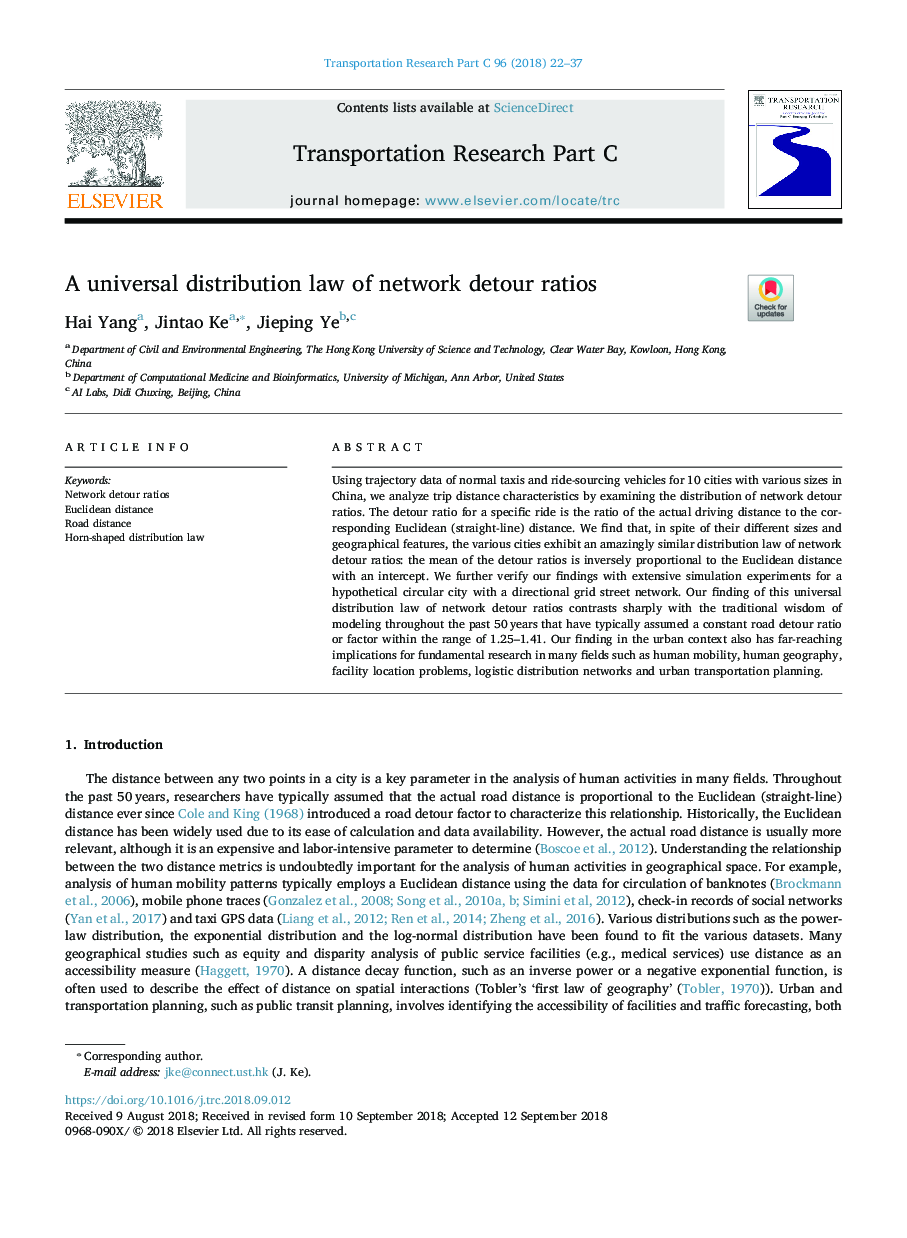| Article ID | Journal | Published Year | Pages | File Type |
|---|---|---|---|---|
| 10226009 | Transportation Research Part C: Emerging Technologies | 2018 | 16 Pages |
Abstract
Using trajectory data of normal taxis and ride-sourcing vehicles for 10 cities with various sizes in China, we analyze trip distance characteristics by examining the distribution of network detour ratios. The detour ratio for a specific ride is the ratio of the actual driving distance to the corresponding Euclidean (straight-line) distance. We find that, in spite of their different sizes and geographical features, the various cities exhibit an amazingly similar distribution law of network detour ratios: the mean of the detour ratios is inversely proportional to the Euclidean distance with an intercept. We further verify our findings with extensive simulation experiments for a hypothetical circular city with a directional grid street network. Our finding of this universal distribution law of network detour ratios contrasts sharply with the traditional wisdom of modeling throughout the past 50â¯years that have typically assumed a constant road detour ratio or factor within the range of 1.25-1.41. Our finding in the urban context also has far-reaching implications for fundamental research in many fields such as human mobility, human geography, facility location problems, logistic distribution networks and urban transportation planning.
Keywords
Related Topics
Physical Sciences and Engineering
Computer Science
Computer Science Applications
Authors
Hai Yang, Jintao Ke, Jieping Ye,
